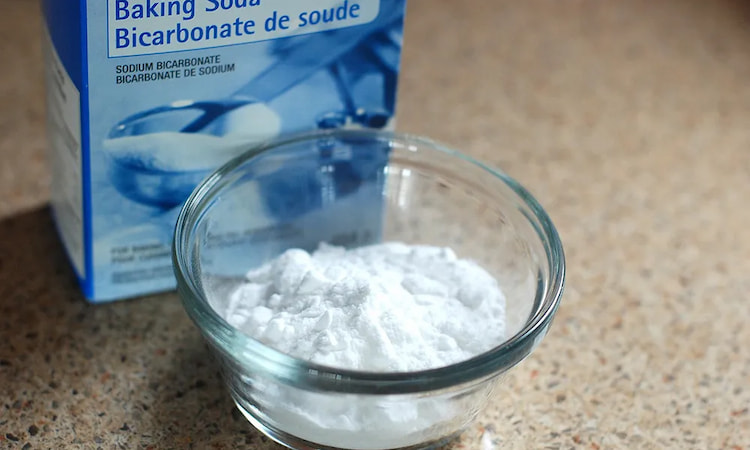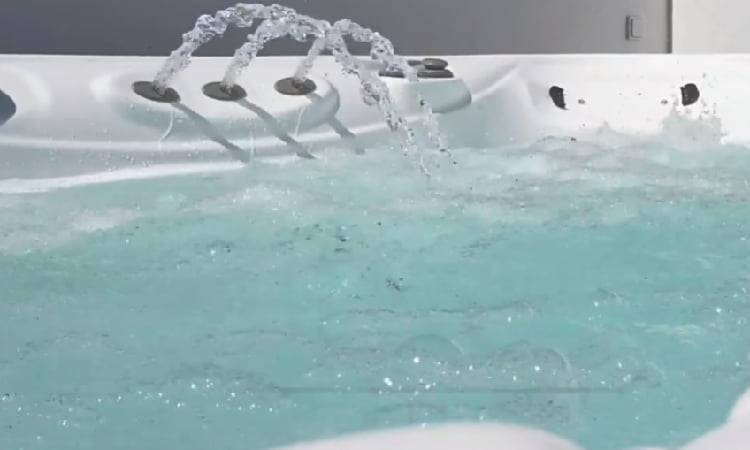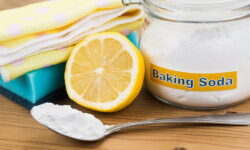You’ve got a hot tub and you’re keen on keeping it in tip-top shape. It’s crucial you understand the importance of pH balance. Ever thought about using baking soda? It’s a handy, cost-effective option. But, does it really raise the pH level?
Yes, baking soda does raise the pH in a hot tub. Baking soda, also known as sodium bicarbonate, is a base, which means it can help neutralize acidic substances and therefore increase the pH level. In a hot tub, adding baking soda will help balance the water’s pH and make it more alkaline.
However, it should be used cautiously and in correct proportions to avoid drastically altering the water chemistry. So, let’s delve into this, explore how baking soda works in hot tubs, and discuss both the pros and cons.

Quick Navigation
Understanding the Importance of pH Balance in Hot Tubs
You’ve got to understand that maintaining the right pH balance in your hot tub is crucial for both your comfort and the tub’s longevity. The pH scale, which ranges from 0 to 14, measures the acidity or alkalinity of your hot tub’s water. A pH level below 7 indicates acidity, while a level above 7 signals alkalinity. Ideally, your hot tub’s pH should hover between 7.2 and 7.8.
A balanced pH ensures the effectiveness of your sanitizer, keeping bacteria and algae at bay. If the water is too acidic, it can cause skin and eye irritation. Plus, it can corrode your hot tub’s equipment and the tub itself, leading to costly repairs. On the other hand, if the water’s too alkaline, it can cause scale buildup, and cloudy water, and can also hamper your sanitizer’s performance.
Adjusting your hot tub’s pH isn’t rocket science. You can use pH increasers or decreasers, readily available in the market. Regular testing is key to maintaining the right balance. It’s like a tightrope walk, but with a little vigilance, you’ll be able to keep your tub’s pH in the sweet spot.
Related Read: Common Causes of High pH in Hot Tubs
Chemical Characteristics of Baking Soda
Where do you think baking soda gets its reputation for being a jack of all trades? It’s all down to its chemical characteristics. Baking soda, also known as sodium bicarbonate, is a type of salt. It’s a weak base that can react with acids to help neutralize them.
In hot tubs, this alkaline substance can raise the pH level, making the water less acidic. It’s this balancing act that makes it a popular choice for hot tub maintenance. But remember, it’s not as simple as dumping in a box of baking soda and calling it a day. For effective use, you’ve got to understand the chemistry behind it.
When baking soda dissolves in water, it breaks down into sodium and bicarbonate ions. The bicarbonate ions react with the water to form a buffering system that resists pH changes. This means that baking soda will not only raise the pH level but also help stabilize it, preventing drastic fluctuations.
Now, isn’t that a neat trick? So, next time you’re balancing your hot tub’s pH, remember the chemical power behind that humble box of baking soda.
Related Read: Will High pH in Hot Tub Hurt You?
How Baking Soda Affects the pH Level in Hot Tubs

While you’re using baking soda in your hot tub, it’s crucial to understand how it directly influences the pH level. Baking soda, or sodium bicarbonate, is a base substance. When added to your hot tub water, it reacts with the water’s acidity, increasing the pH level and making the water more alkaline.
Here’s a quick rundown of its effects:
- it raises the pH level: baking soda’s basicity counteracts the acidity in your hot tub water, pushing the pH level upwards. This helps in maintaining a balanced pH level, which should ideally be between 7.2 to 7.8 for a hot tub.
- it affects the total alkalinity: while it increases the pH level, baking soda also elevates the total alkalinity, which is a measure of the water’s ability to neutralize acids. High alkalinity can cause cloudy water and scaling.
Keep in mind, that managing your hot tub’s chemistry isn’t just about adding baking soda. You have to regularly test the water and adjust the chemicals as necessary. Remember, a well-balanced hot tub offers a more enjoyable, safer soak.
Safe and Effective Ways to Use Baking Soda in Hot Tubs
Anyone can use baking soda in their hot tub, but it’s important to do it safely and effectively. Baking soda, also known as sodium bicarbonate, can raise the pH levels of your hot tub if used correctly. Here’s how you can do it:
Firstly, always test your hot tub water before adding any chemicals. This is crucial to avoid over-correction. Secondly, add the baking soda in small amounts. Typically, 1 tablespoon raises the pH of 100 gallons of water by 0.1. Lastly, allow the water to circulate for a few hours, then retest and adjust if necessary.
Here’s a simple table to guide you:
| Step | Action |
|---|---|
| 1 | Test hot tub water |
| 2 | Add baking soda in small increments |
| 3 | Allow water to circulate and retest |
Potential Risks and Precautions When Using Baking Soda in Hot Tubs
You’ve learned how to use baking soda in your hot tub, but there are potential risks and precautions you should be aware of before proceeding. Baking soda, a common leavening agent, is a known alkaline substance that can effectively raise the pH level of your hot tub water. However, mismanagement can lead to imbalanced chemical levels resulting in potential health and equipment issues.
Key precautions and risks include:
- Overuse of baking soda: possible skin irritation: Overuse can result in excessively alkaline water, which might cause skin irritation and discomfort.
- Equipment damage: high alkalinity can lead to scaling, potentially damaging your hot tub’s equipment.
- Incorrect measurement: pH Imbalance: Too much or too little can disrupt the pH balance, making the water either too acidic or alkaline.
- Ineffective sanitization: an imbalanced pH can reduce the effectiveness of the sanitizers, leading to bacterial growth.
Related Read: Can You Over Shock a Hot Tub?
Frequently Asked Questions
You can naturally raise pH levels in hot tubs using borax or pure aeration. These methods are effective and eco-friendly. Remember, it’s essential to test your water regularly to maintain balance.
You should test your hot tub’s pH level at least twice a week. Regular testing ensures the water stays balanced, preventing potential damage to your tub and ensuring a safer soak for you.
Yes, baking soda can impact your hot tub’s lifespan. It’s used to raise pH levels. If not balanced properly, it can lead to scale buildup, which harms the tub’s surfaces and plumbing system.
Yes, you can use baking soda with other chemicals for pH balance in hot tubs. It’s a natural, safe method to raise pH levels when they’re too acidic. Still, always follow the manufacturer’s guidelines.
When you add baking soda to your hot tub, it doesn’t directly affect water clarity. However, it helps balance pH levels, which indirectly keeps your water clear by preventing algae growth and mineral buildup.
Conclusion
So, can baking soda raise your hot tub’s pH level? Absolutely! It’s an easy and cost-effective way to achieve that perfect balance. However, remember it’s vital to use it judiciously, as too much can lead to risks like cloudiness or scaling.
Always measure accurately, sprinkle slowly, and test your water’s pH frequently. With these precautions, baking soda can be a great asset in your hot tub maintenance toolkit. Happy soaking!



![What is a Stabilizer in a Hot Tub? [Types of Stabilizers] what is a stabilizer in hot tubs and how does it work](https://hottubtales.com/wp-content/uploads/2023/10/what-is-a-stabilizer-in-hot-tubs-and-how-does-it-work-250x150.jpg)

![Can You Over Shock a Hot Tub? [What to Do if You Did?] can you over shock a hot tub](https://hottubtales.com/wp-content/uploads/2023/10/can-you-over-shock-a-hot-tub-250x150.jpg)
![How to Lower Bromine Level in Hot Tub? [& Signs of High Levels] how to lower bromine level in hot tub](https://hottubtales.com/wp-content/uploads/2023/10/how-to-lower-bromine-level-in-hot-tub.jpg)